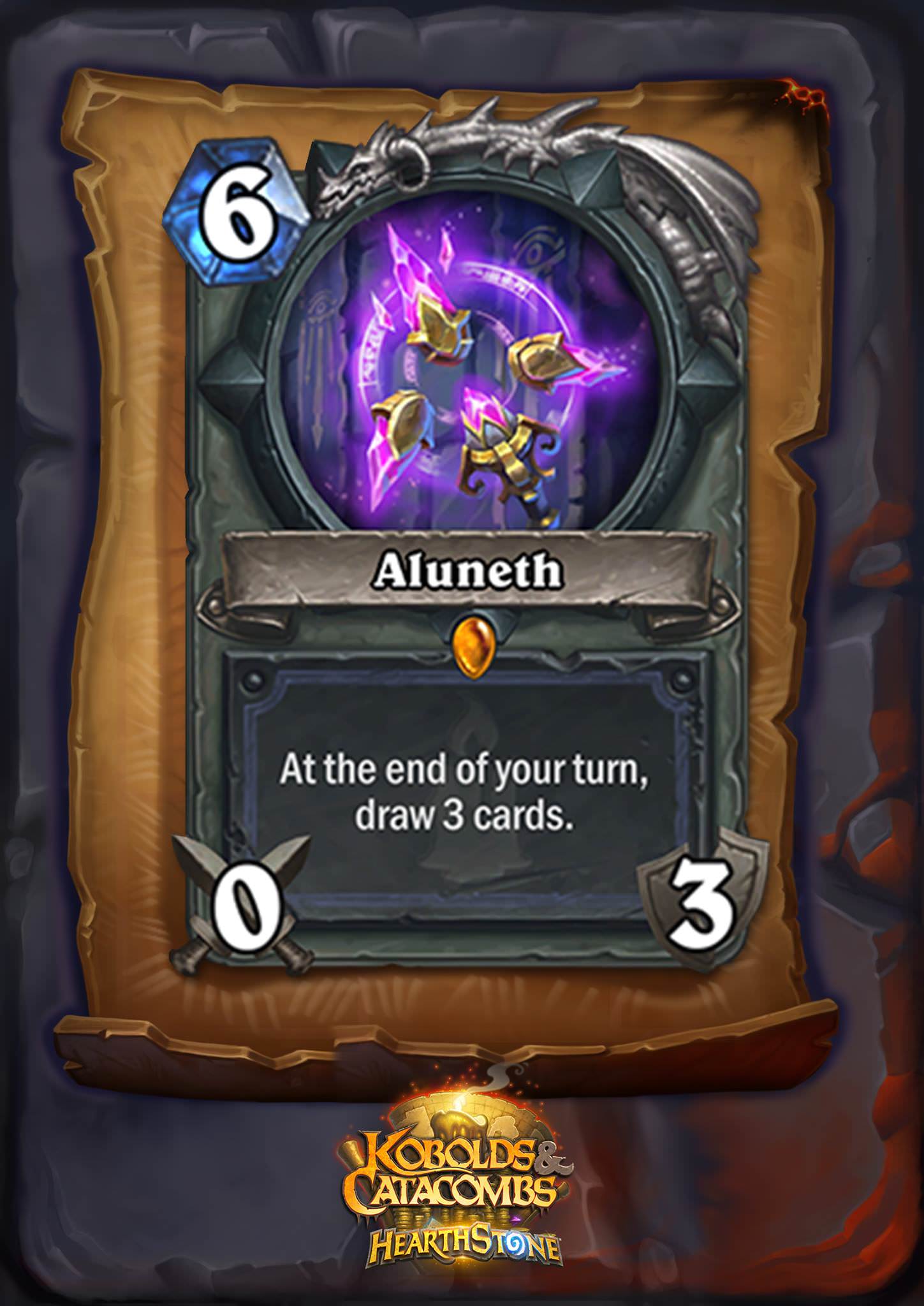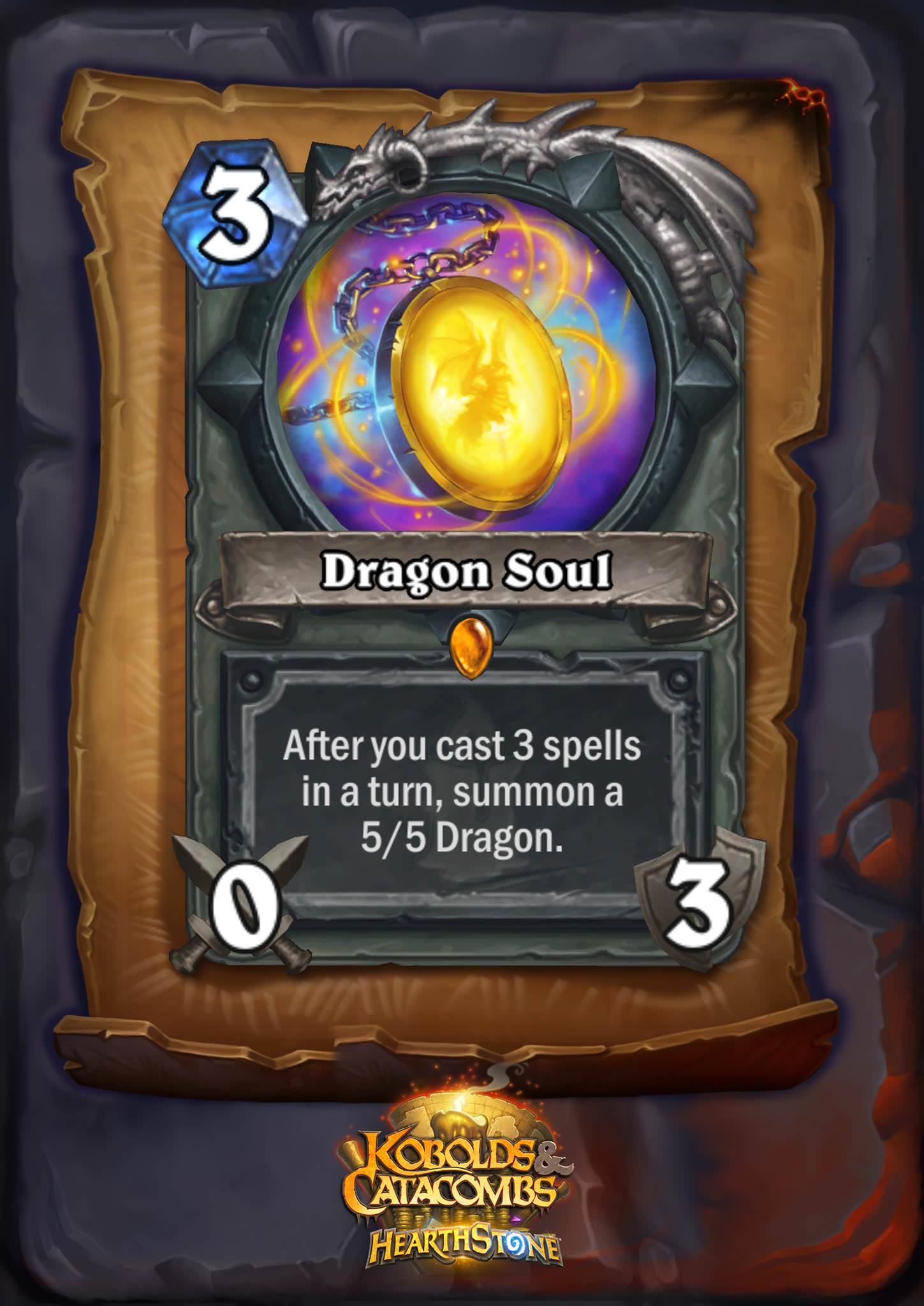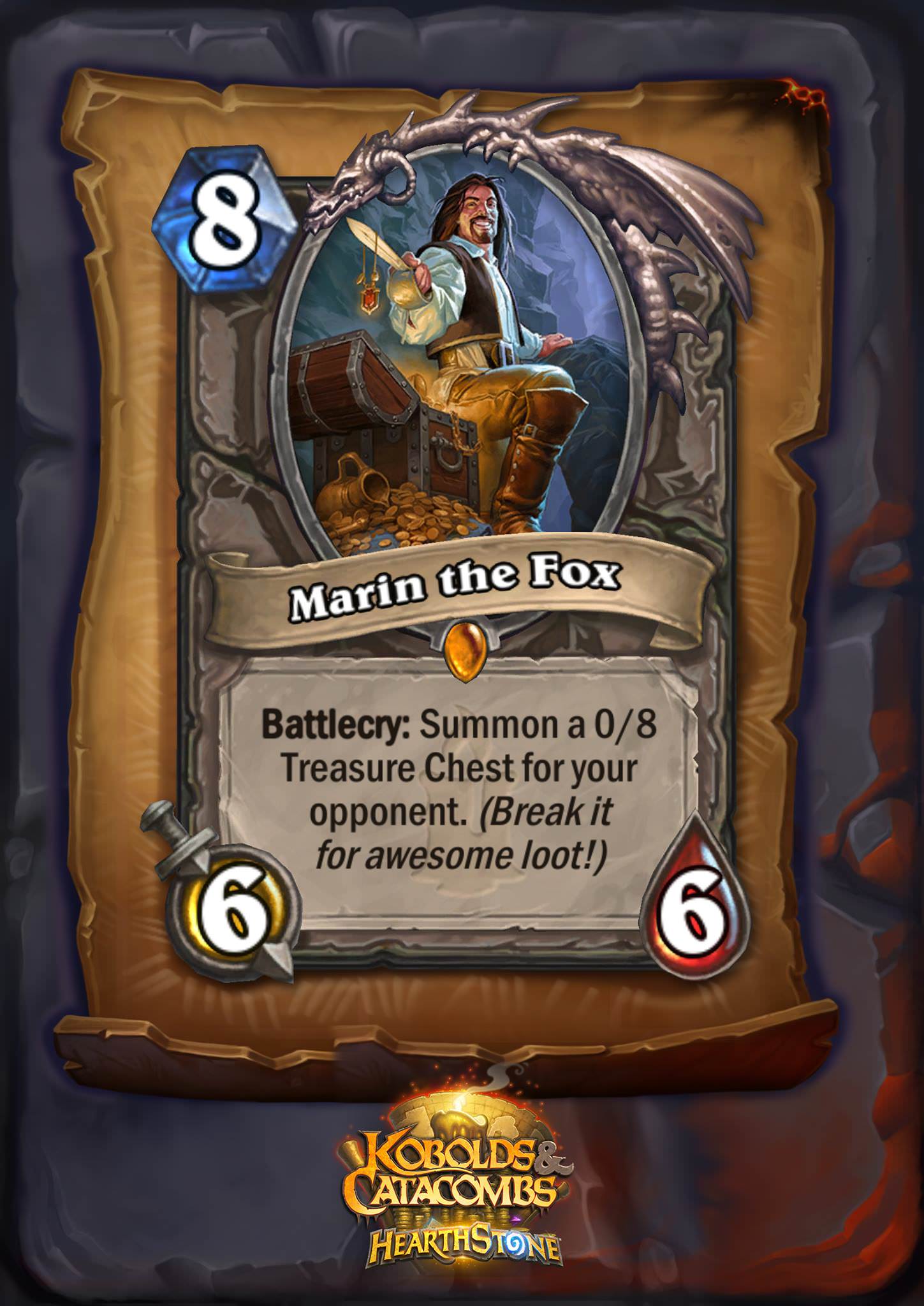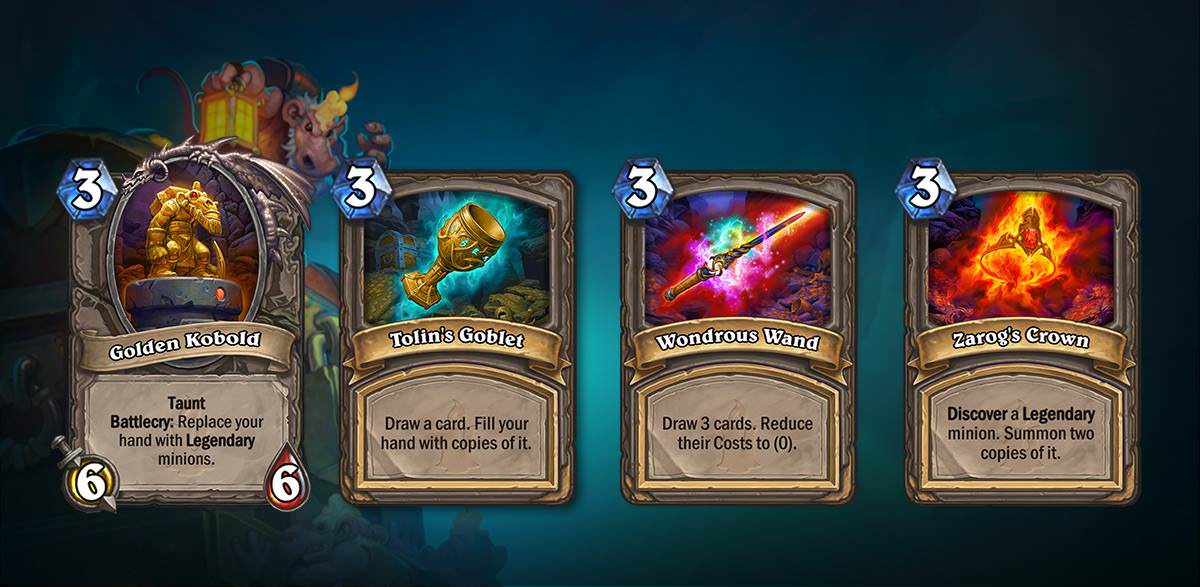It’s that time again. The next Hearthstone expansion, Kobolds and Catacombs, will be launching in early December, and November is the official reveal month. Let’s start taking a look at the new cards, solo player content, and bonuses that Blizzard have announced thus far.
New Class Weapons in Kobolds and Catacombs
The Kobolds and Catacombs set includes some interesting new developments for Hearthstone. The most significant (and amusing) of these is that every class now has a playable weapon. That being said, the non-weapon classes have weapons that have no attack. The new weapons are similar to Artifacts and Auras in Magic: the Gathering, but they’re still vulnerable to cards like Acidic Swamp Ooze. I’m guessing that we’ll see a lot more options for interaction with your opponent’s weapons in this set.
Mage Weapon: Aluneth
The new Mage weapon in Kobolds and Catacombs is Aluneth. It’s six mana 0/3 weapon that reads: “At the end of your turn, draw three cards.” This card is the first indication that there might be some weapon stealing cards added to the game, because Aluneth is unbelievably powerful. Compare it to Cabalist’s Tome. Cabalist’s Tome is a five mana card that generates three random spells. If you’re playing a deck that doesn’t make use of the Mage quest, the three random spells you’ll get from Cabalist’s Tome will almost always be worse than what you might get by simply drawing three cards. Aluneth costs one more mana than Cabalist’s Tome, but it’s definitely worth it, and it’s important to note that Aluneth activates automatically at the end of every turn without incurring any additional mana costs.

Blizzard has confirmed that the new weapons in Kobolds and Catacombs don’t lose durability when they’re activated. For Mage, this means that from turn six onwards, you’ll draw four cards each turn. Forever.
This could easily be one of the best cards in the game. The biggest drawback of Aluneth is that you run the risk of ending up with too many cards, and you’ll be forced to start discarding. This is a significant hurdle if you’re playing a combo deck, or a deck where winning is dependent on drawing certain cards. The other downside is that playing Aluneth gives you a relatively short window of time to close out the game–if you don’t finish the game quickly, it’s going to be quite easy to run out of cards. If you play Aluneth on turn six, you’ve already drawn a third of your deck, which means you have five turns before your entire deck is gone.
That being said, the weapon durability is highly relevant here. Weapons are still destroyed if you attack with them three times in a row, which means that if you play the weapon with ten cards left in your deck, you can choose to simply attack your opponent with it. That would allow you to draw six cards off of it, and destroy the weapon before your deck is entirely depleted.
Priest’s New Weapon: Dragon Soul
The Priest Weapon in Kobolds and Catacombs is called Dragon Soul. It’s not as strong as the Mage weapon, but it’s still a powerful card. It only costs three mana, and, like Aluneth, it’s a 0/3 weapon. The card text reads: “After you cast three spells in a turn, summon a 5/5 Dragon.” For most classes, this would be difficult, but Priest has quite a few low cost spells, and plenty of cheeky options for generating more. Lyra plays will be huge if you have Dragon Soul in play, and if luck is on your side, you can easily make two or three Dragons.

The big drawback of Dragon Soul – apart from any potential weapon stealing/breaking cards – is that it will be difficult to use on the turn it comes into play. Dragon Soul has a ton of potential and looks like it will be a lot of fun, but it will require a lot of mana or certain cards to make it work the same turn you play it, or you’re at of risk losing it to your opponent’s Acidic Swamp Ooze. Still, it’s a great addition to many existing Priest decks, and will offer a lot of new archetypes a massive boost.
You May Like
New Legendary: Marin the Fox
Marin the Fox is a new random Legendary in Kobolds and Catacombs. He’s neutral, costs eight mana, and is only a 6/6. The card text reads: “Battlecry: Summon an 0/8 Treasure Chest for your opponent. (Break it for awesome loot!)” The best part about Marin the Fox, however, is that every player who logs in before the expansion launches gets him for free. I’ve already opened my Marin and thrown him in a few decks to test him out, and as long as you log on soon, you’ll be able to do the same.

The first thing to know about Marin the Fox is that if your opponent kills the chest, you still get the loot, and they can’t steal it. This means Marin is a safer card in many matchups than you might expect.
How the “awesome loot” mechanic work? There are four different possible cards you can receive as “loot” once the chest is destroyed, and all of them are extremely strong. Golden Kobold is arguably the weakest of the bunch, but he’ll take a bit of finesse to use perfectly, as random legendaries will often be worse than the cards you’ve chosen to put in your deck.

Is Marin the Fox viable in competitive play? Probably not. He costs a lot, and you’ll need to dispense a decent amount of damage to break the Treasure Chest. And, of course, the Battlecry gives your opponent a card that can be buffed and used against you. It’s definitely a gamble, but I’m sure there are some decks that can make use of him effectively. Imagine a Priest using Marin, then taking the treasure with Potion of Madness, using Divine Spirit twice, and Inner Fire. When the treasure is already in play, that’s a four card combo that costs six mana and does 32 damage. Not too shabby. There’s definitely potential for Marin, and my biggest concern is that he might be too slow for most decks.
What is Dungeon Run?
Dungeon Runs are a new piece of single player content in Kobolds and Catacombs, similar to the battle against the Lich King in Knights of the Frozen Throne. That being said, the Dungeon Runs seem like way more fun than any of the other solo content we’ve seen in Hearthstone.
In a Dungeon Run, you’re locked into a series of battles against up to eight bosses. If you lose a game, you’re out. After each battle, you get to tweak your deck slightly by adding treasures, new cards, or both. At first, you only have a deck of ten cards from your class, and you’re able to add three more after each victory. You are also given a “treasure card” after every other win. Several of the treasures have passive effects, like giving a minion +1/+1 for the rest of the run, but some are actives, including a 1/4 weapon with Poisonous and Mega Windfury.
Stay tuned for more details about Kobolds and Catacombs, Dungeon Runs, and everything else the new Hearthstone expansion has to offer!
















